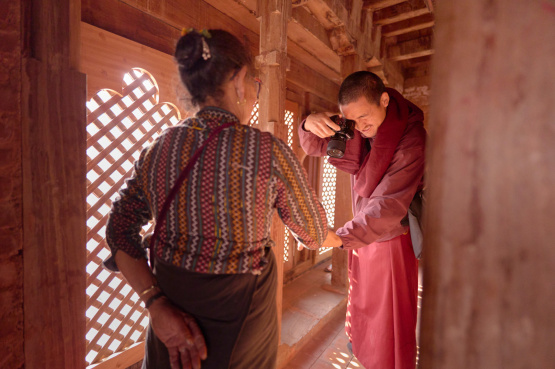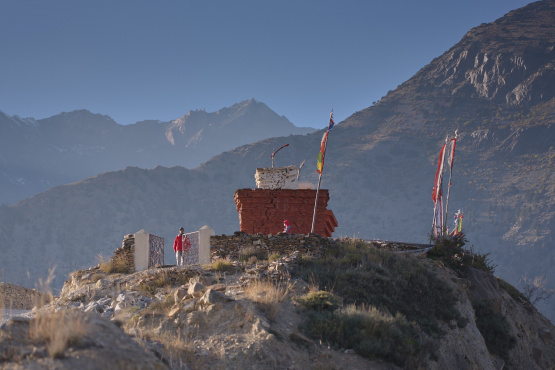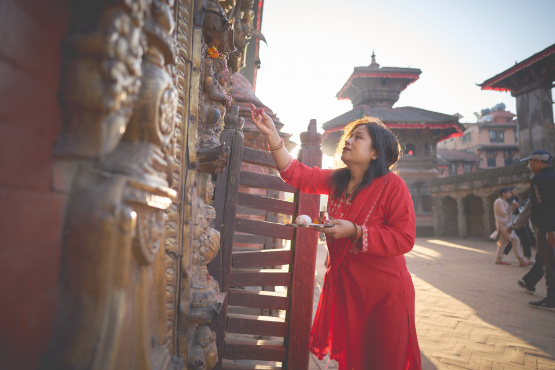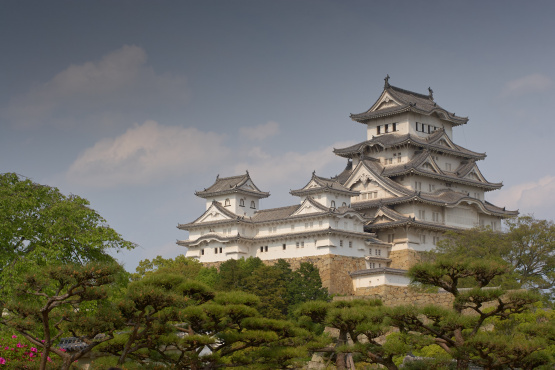Every night in Hanoi a cultural performance unlike any other is repeated for eager audiences. The Hanoi Water Puppets are a unique theatrical experience that uses shallow pools of water to conceal the magic of animation. Fire breathing dragons, rural fisherman and bullocks pulling ploughs are some of the characters that adorn the stage, led through intricate pantomimes with the use of wires hidden beneath the water.
The art of water puppets was born of the rice paddy, where flooded fields provided a ready-made stage in which the theatre could play. Stories performed in the fields were tales of farmers, their lives and the emperors who ruled them.
Life in the rice fields of Northern Vietnam, however, is usually more work than plays. When there isn't rice to be cut and harvested there are fields to be tended by pushing irrigation from one paddy to another. After the harvest the fields need work too. While the earth takes a rest the farmers supply a little rejuvenation with organic nutrients, carrying straw and cuttings from paddock to paddy. The same pigs that are fed on left over rice and straw are helpful in providing manure for the crops.
Planting is a bigger event than the harvest, requiring every spare hand a family can find. Each paddy is flooded and then diligently ploughed with bullocks to break up the soil into mud. The remaining lumps flattened out by hand and tufts of last seasons vegetation pulled aside. Narrow walls that divide one paddy from another are built up stronger each year with extracted grass, straw and mud.
In the cycle of rice everything is useful and nothing is wasted.
Fields of rice provide food for families beyond the rice itself. Grasshoppers grow in great numbers, so much that children can catch a meal with a simple net. As they run along the banks between freshly ploughed rice paddies the grasshopper take flight in fright, only to be trapped by a swooping net. Families can add several kilos of grasshoppers to their diet each week with very little effort, served with the daily banquet after being salted in fish sauce and fried.
Every few years a rice paddy is rested for a season and let fallow. The still water and muddy substrate are perfect for lotus flowers, which not only restore nitrates into the soil but their seeds and roots provide additional treats to feed families.
The rural scenes surrounding Hanoi are flat and fertile, but further to the north the open landscape gives way to mountains where the farming is more laboured and the seasons a little shorter. These regions are home to several ethnic minorities, people who have more in common with ethnic groups in Burma, Thailand, Laos and China than their own countrymen.
If you roamed through all of Northern Vietnam and the remote mountains that border China and Laos you would find dozens of ethnic minorities and their varied sub-groups.
Mai Chau is a village about 100 kilometres west of Hanoi which is mostly populated with the White Thai minority - not be confused with nationals from Thailand. Deeper into the hills beyond Mai Chau are H'Mong and Muong communities. The separation between one ethnic minority and another is often no more than a valley. While lowlands Vietnamese farmers build their homes from bricks and mud, the people around Mai Chau have traditionally preferred timber. White Thai families live in large open homes built above the livestock pens, making the most of long timber beams to build high and wide. The narrow strips of earth between house and paddy are made productive with banana plants, rambutans and other fruit trees.
White Thai people are not just farmers, they are crafts people. Colourful and expressive textiles are a signature of their culture, weaving vibrant garments from home-grown silk. The range of colours used to dye their silk have traditionally reflected the cultural differences between sub-groups. Red Thai, Black Thai and White Thai take pride in their unique identities even though they speak the same dialect.
Every farming family in Mai Chau keeps a little space in their home for the silk worms. Children get the job of gathering leaves to keep the worms fed, while the women collect the silk cocoons. You need hundreds of silk-worms to make a single bobbin of silk thread. The process starts with boiling the cocoons, so that the threads tease apart, and then gathering dozens of strands together to twist into a thread.
As a rule it is the women who twine strands of silk while the men push bullocks through the mud. Grandparents are not excluded from chores either, spending much of their time gathering wild greens from the fields and removing weeds from the rice beds. To the outsider it can be hard to tell one from another. The edges of paddy walls are often overgrown with useful plants, herbaceous greens that can be tossed into a salad or stir-fried with mushrooms.
Farmers let the herbs ramble instead of nurturing them like a vegetable patch. Nature does most of the work for them.
Some of the rice farmers in Northern Vietnam are lucky enough to compliment their diet with fish. South of Mai Chau is the town of Tam Coc and its dramatic landscape dotted with karsts - small hills of limestone that have resisted geological erosion. Rivers meander along flat valleys between these karsts, bending and circling the terrain like an ancient serpent.
Waterways run wide here, with little gradient to speed the current and broad flat channels the expand in the wet season. As the shallow floods recede the farmers plant their rice on the rivers edge. At times it can be hard to see where the field stops and the river begins. Where the river course takes a turn the backwaters are claimed by prolific blooms of lotus, thriving in the shallow depths and nutrient rich mud.
The name Tam Coc literally means "Three Caves", in reference to the Ngo Dong river which passes beneath three limestone karsts with room enough to paddle. The locals say this river is so quiet you can hear a butterflies wings. And there are butterflies here, hundreds of them flitting about the shoreline and shuffling from leaf to lotus in a never ending dance. If indeed they do make a noise it must be imperceptible, their movement so light that not a single stem or blade bends with their presence.
The gentle flow of water makes it easy for farmers to get around by boat, requiring minimal effort to paddle upstream with a load of market greens, feed for their pigs or the rice harvest itself. When the monsoon rains arrive the boats are harder to manoeuvre, yet indispensable. Many of the rural trails turn to mud and even bullocks struggle with pulling a cart from one village to another. Some paths disappear all together beneath the floods.
Farmers for centuries have built their homes on the flanks of karst hills, taking the higher ground to keep clear of rising rivers.
So have emperors. A thousand years ago the limestone karsts were a backdrop to the capital of Vietnam. Hoa Lu was a citadel not far from Tam Coc and the seat of power for a young nation that defied the rule of China. In the 10th century Emperor Dinh Bo Linh assumed control and began a period of national identity that we recognise today as Vietnam. The rivers that connect Hoa Lu and Tam Coc to Hanoi were like highways in ancient times, carrying an exchange of produce and culture between the people of northern Vietnam. Rice went up the river and Buddhism came down.
Evidence of palaces and pagodas built during and following the Dinh Dynasty still exist at Hoa Lu, although in some cases little more than ruins still remain. Ornate temples at Le Dai Hanh, Dinh Tien Hoang and Thien Ton have been restored in recent centuries to preserve their historical significance, and some are active once again as a place for Buddhist study and practice.
For the farmers of modern day Tam Coc the influence of Buddhism is not restricted to temples and ritual. It is draped over their lives like a veil, evident in all directions and as much a part of the landscape as the karst hills or the rivers. Many of the parables that shape the study of Buddhism take place in the daily lives of farmers and their toil with the earth. Buddhism appears to them everywhere - in the song of frogs that thrive in rice paddies, the jade colour of water as it flows over a pebbled riverbed or the precarious survival of a tree that clings to a rocky outcrop of a limestone cliff.
The lotus flowers are especially symbolic in the lives of rural communities, both in Tam Coc or in the mountains around Mai Chau. They are a potent symbol of Buddhist enlightenment, a pure bloom that rises above the water but has its roots mired in the mud below.
The farmers of Mai Chau and Tam Coc are from very different ethnic backgrounds but have very similar lifestyles. Farmers in Tam Coc might speak a little Chinese or even French, while those in Mai Chau speak their ethnic languages first and foremost. But all speak Vietnamese, they have that in common. You'll can find farmers from any ethnic group adorned in the iconic Vietnamese conical hat, the "Non La", keeping the sun off their head while they work in the rice paddies.
Their lives are a long way from the hectic streets of Hanoi where the motorbikes almost outnumber the rice grains. But even in Hanoi itself the water puppets recant tales of the farmers, an enduring cultural relic that owes its origin to the rice.
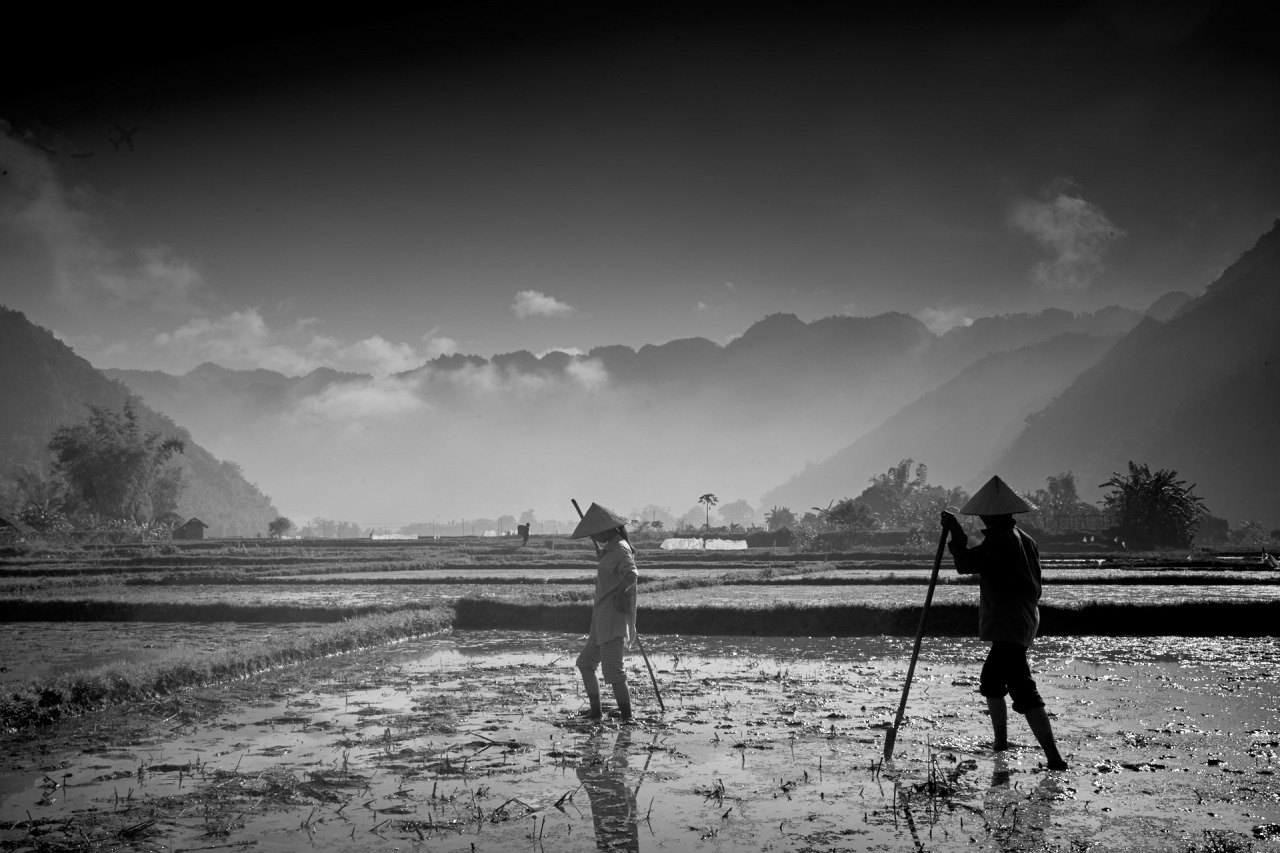
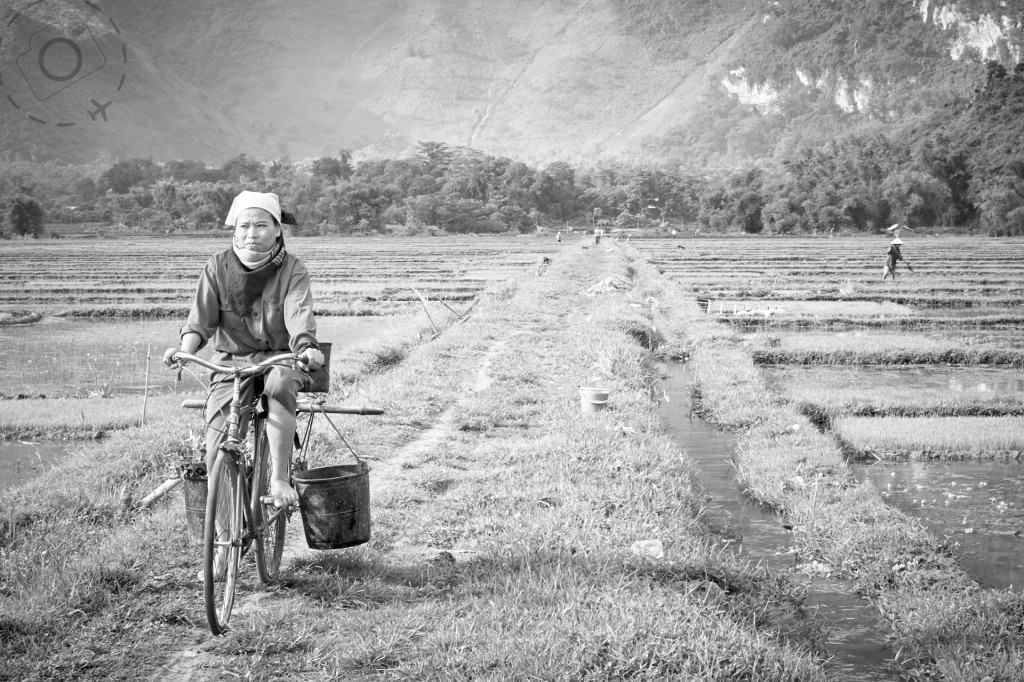
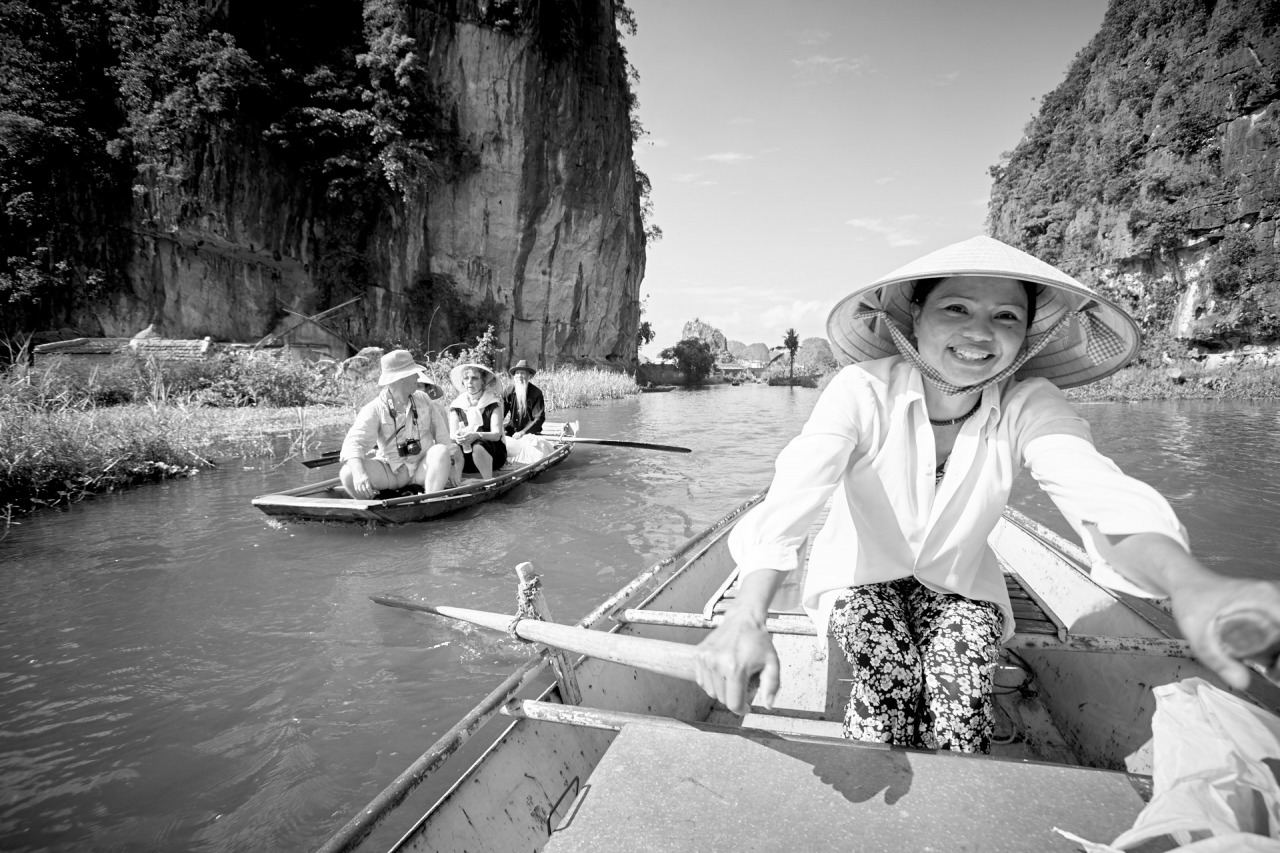

Keep Reading
Join Ewen's newsletter for monthly updates on new photography articles and tour offers...Subscribe Here



